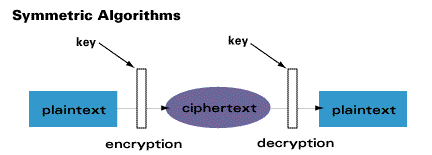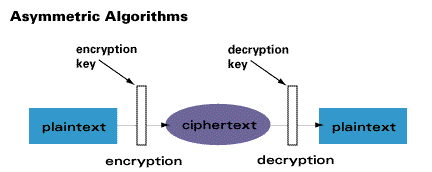
If you want to keep information secret, you have two possible strategies: hide the existence of the information, or make the information unintelligible. Cryptography is the art and science of keeping information secure from unintended audiences, of encrypting it. Conversely, cryptanalysis is the art and science of breaking encoded data. The branch of mathematics encompassing both cryptography and cryptanalysis is cryptology.
Modern cryptography uses sophisticated mathematical equations (algorithms) and secret keys to encrypt and decrypt data.

Today, cryptography is used to provide secrecy and integrity to our data, and both authentication and anonymity to our communications.
Cryptology was a public field in the United States until World War I, when the Army & Navy realized its value to national security and began working in secret. Through the early 1970s, cryptology was dominated by the government both because computers were very expensive and because the government released very little information. It returned to mainstream academic and scientific communities in a sort of cryptology renaissance when the computer revolution made computers more readily available and when demand for encryption increased due to fundamental changes in the ways America communicated.
The increase in demand for cryptography was driven by industry interest (e.g., financial services required secure electronic transactions and businesses needed to secure trade secrets stored on computers), and individual interest (e.g., secure wireless communications). Digital communications were obvious candidates for encryption.
Modern cryptographers emphasize that security should not depend on the secrecy of the encryption method (or algorithm), only the secrecy of the keys. The secret keys must not be revealed when plaintext and ciphertext are compared, and no person should have knowledge of the key. Modern algorithms are based on mathematically difficult problems - for example, prime number factorization, discrete logarithms, etc. There is no mathematical proof that these problems are in fact are hard, just empirical evidence.
Modern cryptographic algorithms are too complex to be executed by humans. Today's algorithms are executed by computers or specialized hardware devices, and in most cases are implemented in computer software.
The design of secure systems using encryption techniques focuses mainly on the protection of (secret) keys. Keys can be protected either by encrypting them under other keys or by protecting them physically, while the algorithm used to encrypt the data is made public and subjected to intense scrutiny. When cryptographers hit on an effective method of encryption (a cipher), they can patent it as intellectual property and earn royalties when their method is used in commercial products. In the current open environment, many good cryptographic algorithms are available in major bookstores, libraries and on the Internet, or patent office.
There are two types of key-based encryption, symmetric (or secret-key) and asymmetric (or public-key) algorithms. Symmetric algorithms use the same key for encryption and decryption (or the decryption key is easily derived from the encryption key), while asymmetric algorithms use a different key for encryption and decryption, and the decryption key cannot be derived from the encryption key.
Symmetric algorithms can be divided into stream ciphers and block ciphers. Stream ciphers can encrypt a single bit of plaintext at a time, whereas block ciphers take a number of bits (typically 64 bits in modern ciphers), and encrypt them as a single unit. An example of a symmetric algorithm is DES.

Asymmetric ciphers (also called public-key cryptography) make a public key universally available, while only one individual possesses the private key. When data is encrypted with the public key, it can only be decrypted with the private key, and vice versa. Public key cryptography adds a very significant benefit - it can serve to authenticate a source (e.g. a digital signature). Public key cryptography was invented by Whitfield Diffie and Martin Hellman in 1975. An example of an asymmetric algorithm is RSA.

In general, symmetric algorithms execute much faster than asymmetric ones. In real applications, they are often used together, with a public-key algorithm encrypting a randomly generated encryption key, while the random key encrypts the actual message using a symmetric algorithm. This combination is commonly referred to as a digital envelope.
Home
Popular Algorithms & How They Work
Key Length - How Long is Long Enough?
Cryptography in Everyday Life
America's Social/Political Debate
Resources & References